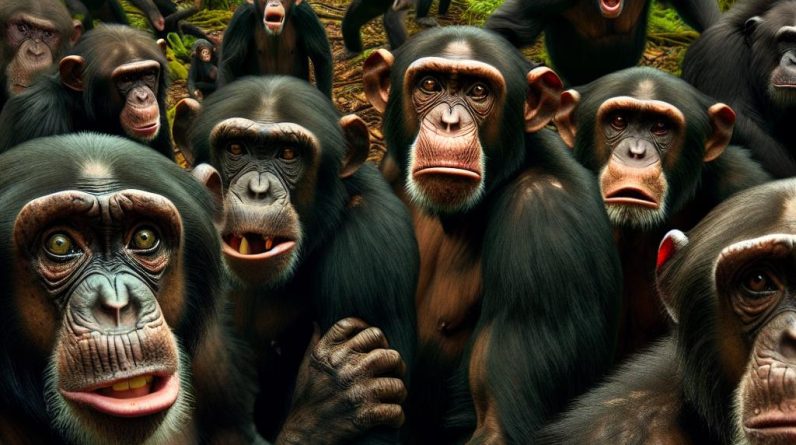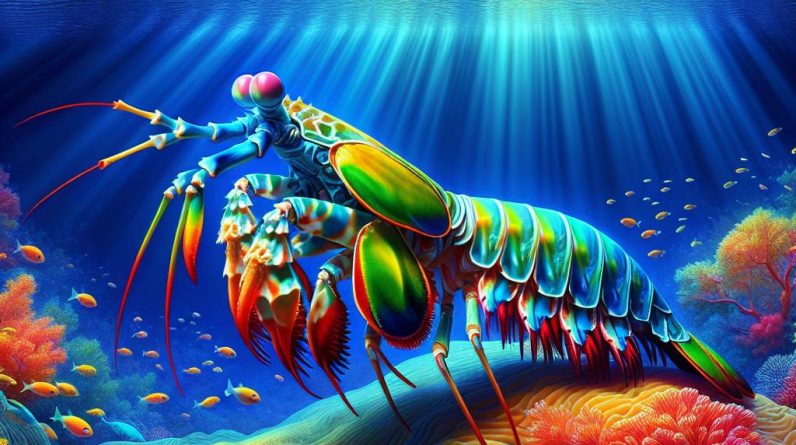Dive into the fascinating world of wildlife in our latest video, where we unravel some of nature’s most astonishing survival strategies. Witness the opossum’s uncanny ability to fool predators with its dramatic act of playing dead, a clever survival tactic known as thanatosis. Marvel at the male bowerbird, an extraordinary artist of the avian world, as it meticulously crafts its nest with vibrant objects to attract a mate, showcasing its creative flair. And don’t miss the tiny yet formidable bombardier beetle, which defends itself by unleashing a chemical explosion from its abdomen, showcasing nature’s brilliance in defense mechanisms. These incredible… n #funfacts #themoreyouknow
Uncovering the Strange Behaviors of Animals You Never Knew
The Quirky Mating Rituals of the Animal Kingdom
Mating rituals in the animal kingdom can be bizarre and theatrical, showcasing the lengths to which animals go to attract a mate. Here are some engaging examples:
- Peacocks: Male peacocks display their splendid feathers in an elaborate tail fanning to impress females.
- Seahorses: These unique creatures engage in a beautiful dance where males carry fertilized eggs in their pouches, showcasing the ultimate role reversal in parental care.
- Wolves: Wolves participate in a complex courtship process involving howling and playful interactions to strengthen their pair bond.
Unique Courtship Displays
| Animal | Mating Ritual |
|---|---|
| Bird of Paradise | The males perform elaborate dances and display colorful plumage to attract females. |
| Blue-footed Booby | These birds show off their bright blue feet in a dance to attract mates. |
| Mandrill | Male mandrills exhibit colorful facial features and rear ends to display their virility. |
Unconventional Communication Methods
Animals have developed remarkable ways to communicate with each other, some of which are truly strange.here are a few examples:
- Honeybees: Thru a behavior known as the “waggle dance,” honeybees convey the distance and direction of food sources.
- Elephants: These gentle giants communicate using infrasound, which are low-frequency vibrations that can travel long distances.
- Prairie Dogs: These rodents have a complex language with different calls that denote specific predators and their sizes.
Interesting Examples of Animal Communication
| Animal | Communication Method |
|---|---|
| Whales | They use songs that can last for hours to communicate with others in their pod. |
| Octopus | By changing color and texture, they communicate with potential mates or threats. |
| Chimpanzees | They use facial expressions, gestures, and vocalizations to convey emotions and intentions. |
The Fascinating world of Animal Adaptation
Animal adaptations often lead to strange and unexpected behaviors that contribute to survival. Let’s explore some instances of these adaptations:
- Chameleons: Known for their color-changing abilities, chameleons adapt their skin color to blend in with their habitat, communicate with other chameleons, or regulate their body temperature.
- Axolotls: These remarkable salamanders exhibit neoteny, retaining their juvenile features into adulthood, which allows them to thrive in aquatic habitats.
- Pangolins: With their unique armor of keratin scales, pangolins roll into a ball when threatened, showcasing a peculiar form of self-defense.
Adaptation Strategies of Various animals
| Animal | Adaptation |
|---|---|
| Arctic Fox | Changes fur color seasonally for camouflage. |
| Star-nosed Mole | Uses its unique nose to detect food in complete darkness. |
| Frogfish | Has lures on its heads to attract prey. |
Case Studies: The Eccentric World of Animal Behavior
Case Study 1: The Social Structure of Dolphins
Dolphins exhibit strange behaviors related to their social structure and living in pods. They communicate through clicks and whistles and have been observed exhibiting playful behaviors such as surfing on waves. this social tendency frequently enough leads them to assist injured or sick pod members, showcasing their strong sense of community.
Case Study 2: The Artistic Ants
Leafcutter ants are known for their unique symbiotic relationship with a fungus that they cultivate for food. They display remarkable behavior by cutting leaves and bringing them back to their nests to create a substrate ideal for fungus growth. This process is not just for survival but showcases a level of agriculture in the animal kingdom that manny would consider ‘strange.’
First-Hand Experience: Observations of odd Animal behavior
Many wildlife enthusiasts have reported strange animal behaviors during their encounters. Here are a few captivating anecdotes:
- One observer noted that a group of wild parrots engaged in what appeared to be a game of ”tag,” flying close and lightly tapping each other with their beaks as they soared through the trees, showcasing their playful nature.
- A wildlife photographer captured a moment when a family of otters was sliding down a snowy hill, apparently taking turns and giggling (or whatever the otter equivalent of giggling is), further demonstrating their sense of community and playfulness.
Benefits of Understanding Animal Behavior
Studying the strange behaviors of animals can lead to numerous benefits:
- Conservation Efforts: Understanding the unique mating and social behaviors can aid in conservation strategies aimed at preserving endangered species.
- Scientific Research: Animal behavior studies contribute to our understanding of evolution, ecology, and environmental science.
- Human Connection: Observing animal behavior can foster a deeper connection between humans and nature, encouraging stewardship of wildlife environments.
Practical Tips for Observing Animal Behavior
For those interested in observing animal behaviors, here are some practical tips:
- Patience is Key: Spend time in nature, as many exciting behaviors can take time to reveal themselves.
- Be Quiet: Minimize noise to avoid startling animals, and allow them to carry on with their natural behaviors.
- Use Binoculars: This will help you observe subtle behaviors from a distance without disturbing the wildlife.
- Document Your Findings: Keep a journal or digital log of your observations — you might discover patterns!






